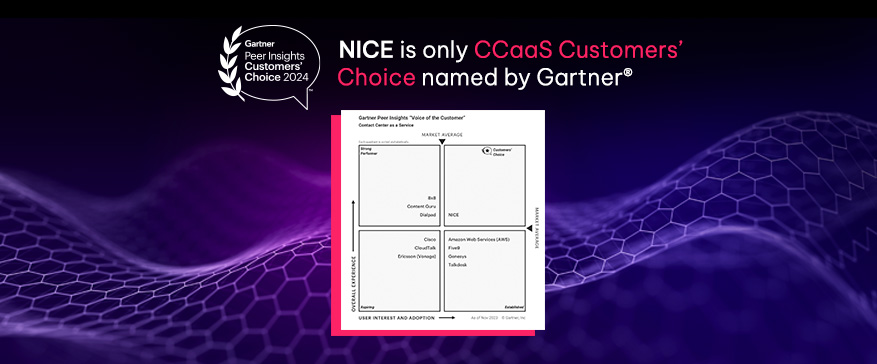Fulton Bank Connects and Streamlines Service for 230 Regional Banks with NICE CXone in the Cloud
- Introduction to Financial Services Compliance
- Why Is Financial Services Compliance Management Software Important?
- Regulatory Compliance Overview
- Key Features of Financial Services Compliance Software
- Compliance Processes and Workflows
- How Financial Services Compliance Software Works
- Compliance Management for Financial Institutions
- Expert Guidance and Support
- Benefits of Financial Services Compliance Software
- Conclusion
- Call to Action
Introduction to Financial Services Compliance
Financial services compliance is a cornerstone of the financial industry, ensuring that institutions operate within the bounds of regulatory requirements and maintain the trust of their customers. The landscape of regulatory compliance is intricate and constantly evolving, making it imperative for financial institutions to stay ahead of the curve. This is where compliance management software comes into play.Compliance management software is designed to streamline operations, reduce risk, and enhance overall efficiency. By automating and managing compliance processes, this software helps financial institutions adhere to regulatory requirements, thereby safeguarding their operations and reputation. In an industry where regulatory breaches can lead to severe penalties and loss of consumer trust, having robust compliance management systems is not just beneficial but essential.Why Is Financial Services Compliance Management Software Important?
The financial services industry is one of the most highly regulated sectors globally. Regulatory bodies, both domestic and international, impose strict rules to ensure that financial institutions operate in a transparent and ethical manner. Compliance with these regulations is vital to avoid legal issues, fines, and the erosion of consumer trust.Here’s why financial services compliance software is critical:1. Ensures Regulatory AdherenceCompliance software helps financial organizations navigate the complexities of the regulations governing their operations. Regulations such as the Dodd-Frank Act, Basel III, Anti-Money Laundering (AML) regulations, and Know Your Customer (KYC) requirements are some of the major frameworks that financial institutions must follow. Compliance software assists businesses in understanding and meeting these standards, thereby avoiding non-compliance penalties and mitigating risks associated with regulatory breaches.- Staying Up-to-Date with Regulations: Regulatory frameworks change frequently, and businesses must stay informed of these shifts. Compliance software provides real-time updates about new or updated regulations to ensure businesses comply with the latest legal requirements.
- Simplifies Complexity: Compliance regulations are often complex and specific, but the software breaks them down into manageable processes, ensuring that every step is followed accurately.
- Risk Monitoring: The software can continuously monitor transactions and detect anomalies, fraud, or non-compliant behavior, ensuring swift action is taken.
- Proactive Risk Prevention: By utilizing the risk management features of compliance software, businesses can anticipate potential issues and address them before they escalate into serious problems.
- Efficient Report Generation: Compliance software can generate regulatory reports and submit them automatically, reducing the administrative burden and human errors that can occur with manual reporting.
- Audit Readiness: The software maintains a comprehensive record of transactions, communications, and documents, making it easier for businesses to conduct internal audits or respond to external audit inquiries.
- Lower Operational Costs: Automating processes like risk management, reporting, and customer verification saves resources, allowing businesses to reallocate these funds to more strategic areas.
- Minimizing Fines and Penalties: With a solid compliance system in place, businesses reduce the risk of violating regulations and incurring costly fines, which can significantly affect the bottom line.
Regulatory Compliance Overview
Navigating the regulatory compliance landscape can be daunting for financial institutions, given the multitude of federal regulations, regulatory requirements, and compliance standards they must adhere to. Compliance management software serves as a centralized platform that simplifies this complexity.This software helps financial institutions track regulatory changes, manage compliance processes, and demonstrate proof of compliance. Key regulations such as the Dodd-Frank Act, Basel III, and Anti-Money Laundering (AML) requirements are just a few examples of the standards that financial institutions must follow. Compliance management software ensures that institutions stay updated with these regulatory changes, thereby minimizing compliance risk and enhancing operational efficiency.Key Features of Financial Services Compliance Software
Financial services compliance software provides a wide array of features that help organizations comply with the financial regulations and safeguard their operations. Here’s a breakdown of the core features:1. Regulatory Reporting and Filings- Automated Report Generation: Software can automatically generate compliance reports, reducing the time spent on manual report creation.
- Simplified Compliance Filing: Compliance software integrates with regulatory bodies’ portals, enabling businesses to submit reports directly, saving time and reducing errors.
- Continuous Monitoring: The software provides continuous monitoring of financial transactions, activities, and accounts to flag irregularities that might indicate potential risks such as fraud, money laundering, or compliance violations.
- Predictive Analysis: Many software tools use predictive analytics to foresee potential risks and recommend preventive measures to mitigate these risks.
- Continuous Monitoring: The software provides continuous monitoring of financial transactions, activities, and accounts to flag irregularities that might indicate potential risks such as fraud, money laundering, or compliance violations.
- Predictive Analysis: Many software tools use predictive analytics to foresee potential risks and recommend preventive measures to mitigate these risks.
- Automated Customer Verification: KYC processes are automated, including identity verification, background checks, and risk assessments for new customers.
- AML Transaction Monitoring: Financial services compliance software tracks transactions for patterns indicative of money laundering and fraud. It flags suspicious activities for investigation and provides tools to investigate potential violations.
- Automated Customer Verification: KYC processes are automated, including identity verification, background checks, and risk assessments for new customers.
- AML Transaction Monitoring: Financial services compliance software tracks transactions for patterns indicative of money laundering and fraud. It flags suspicious activities for investigation and provides tools to investigate potential violations.
- Data Encryption: The software encrypts sensitive customer data, ensuring that it’s protected from unauthorized access.
- Consent Management: Compliance software allows businesses to track and manage customer consent for data collection, use, and sharing, ensuring transparency and compliance with data protection laws.
- Data Encryption: The software encrypts sensitive customer data, ensuring that it’s protected from unauthorized access.
- Consent Management: Compliance software allows businesses to track and manage customer consent for data collection, use, and sharing, ensuring transparency and compliance with data protection laws.
- Document Storage: Compliance software includes document management features that store compliance documents securely and ensure they are easy to retrieve when needed.
- Audit Logs: The software generates and stores audit logs, providing a record of all actions taken by users to ensure accountability and transparency.
- Document Storage: Compliance software includes document management features that store compliance documents securely and ensure they are easy to retrieve when needed.
- Audit Logs: The software generates and stores audit logs, providing a record of all actions taken by users to ensure accountability and transparency.
- Automated Alerts: The software sends alerts to compliance teams when action is required, such as a document expiring or when a suspicious transaction is flagged.
- Streamlined Processes: Automating compliance workflows ensures that processes are followed consistently, reducing errors and improving efficiency.
- Automated Alerts: The software sends alerts to compliance teams when action is required, such as a document expiring or when a suspicious transaction is flagged.
- Streamlined Processes: Automating compliance workflows ensures that processes are followed consistently, reducing errors and improving efficiency.
Compliance Processes and Workflows
Compliance processes and workflows are the backbone of a financial institution’s compliance program. These processes include risk assessment, compliance monitoring, and reporting, all of which are critical to maintaining regulatory adherence. Compliance management software automates and streamlines these processes, reducing the risk of non-compliance and improving overall efficiency.For instance, risk assessment tools within the software continuously monitor financial transactions and activities, flagging any irregularities that might indicate potential risks. Compliance monitoring ensures that all operations adhere to regulatory standards, while automated reporting tools generate accurate and timely compliance reports. By automating these workflows, financial institutions can focus on strategic initiatives rather than getting bogged down by manual compliance tasks.How Financial Services Compliance Software Works
Financial services compliance software typically works by integrating with a financial institution’s core systems (such as transaction processing, accounting, and CRM systems) and ensuring that all data is compliant with regulations. Here’s how the software operates:- Integration with Core Systems: Compliance software integrates with internal systems to capture and manage data. For example, it may pull data from a bank’s transaction management system or customer database to monitor compliance.
- Data Collection and Monitoring: The software collects data continuously and checks it against regulatory requirements, flagging any discrepancies or violations that need attention.
- Reporting and Audit Generation: Compliance software generates automated reports based on real-time data and ensures that reports are submitted on time. It also maintains an audit trail of all actions for transparency.
- Risk Management and Alerts: As the software monitors data, it identifies risks (such as fraudulent transactions) and triggers alerts for compliance officers to review and address.
- Continuous Updates: The software receives updates regarding changing regulations and automatically adjusts compliance processes to meet new legal standards, ensuring ongoing compliance.










